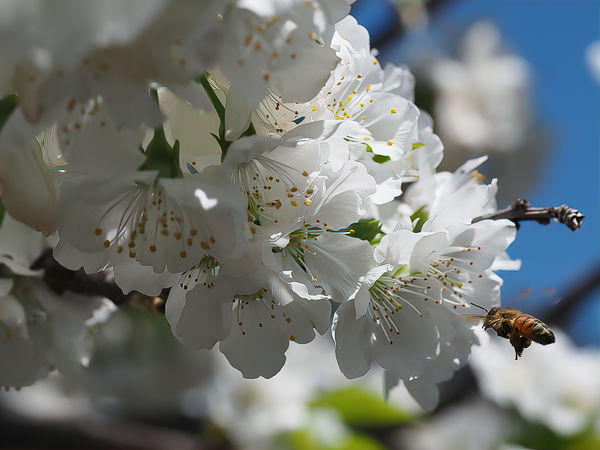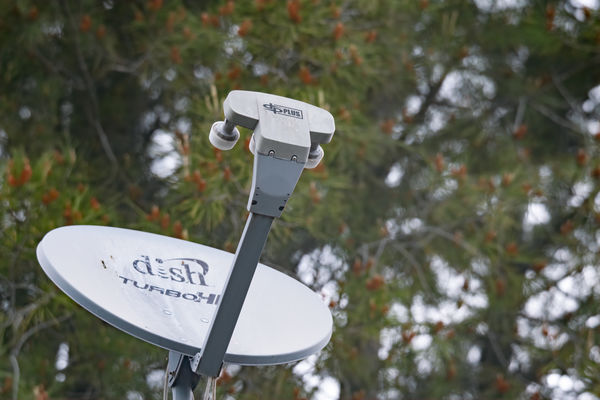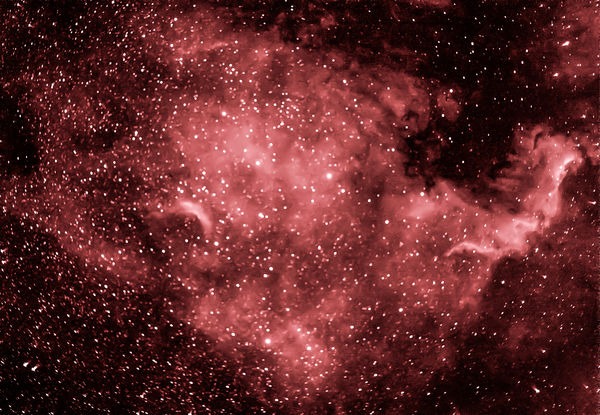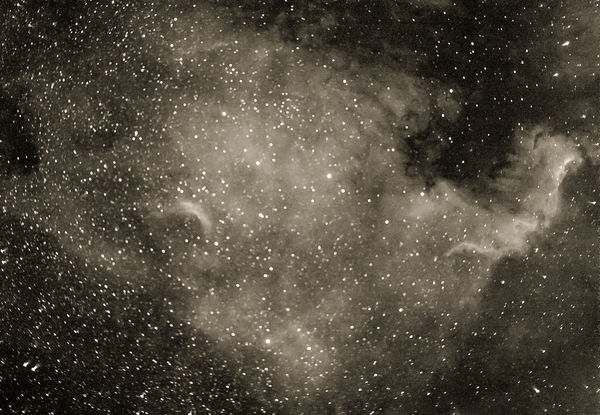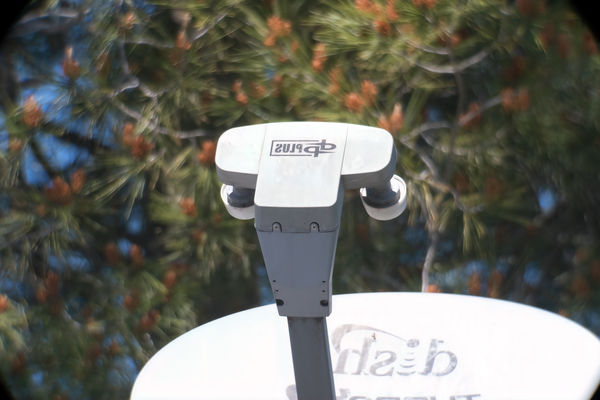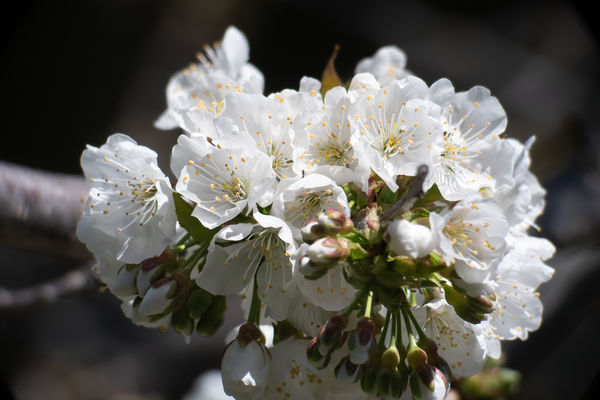Using a low cost astro scope for terrestrial images
Jun 9, 2019 21:47:08 #
I was trying out a Astro Tech AT60ED scope to see how well it might work as a telephoto lens. I would put a link for this scope, but then it would be moved to another forum, so I won't. This is a 360mm f6 scope that is actually quite small. I added to it their field flattener which improves the images. And I used a telescope T-Ring. This small scope has a coarse and fine focuser in which the fine adjust reduces the rotation 10:1 making manual focus incredibly easy.
Image #1 was taken with an Olympus EM5ii with this scope at about 10-12 feet. With the 2X crop factor, this was a FOV equivalent 720mm shot. I had changed the camera to burst mode in JPEG and forgot that the image size was smaller than I intended. But the image turned out, so here it is.
Image #2 is a shot of the antenna on my roof at about 60 feet distance. I focused on the 2 screws on the bottom of the feed horn. This one used a full frame Sony A7iii which was an absolute joy to focus with this small telescope.
Image #3 is a shot of some flowers showing that the scope is quite sharp. Again using the Sony A7iii. About 15-20 feet distance.
Image #4 was taken of the North American Nebula taken before I purchased the field flattener. You can see the distortion to stars in the corners that the field flattener is supposed to fix. I haven taken the scope out at night since I purchased the field flattener to see how well this has happened.
Astro Tech manufacturers a whole line of scopes of various sizes. But this is the small one. Actually smaller and lighter than my Tamron 150-600, and much less expensive. And it works great!
Image #1 was taken with an Olympus EM5ii with this scope at about 10-12 feet. With the 2X crop factor, this was a FOV equivalent 720mm shot. I had changed the camera to burst mode in JPEG and forgot that the image size was smaller than I intended. But the image turned out, so here it is.
Image #2 is a shot of the antenna on my roof at about 60 feet distance. I focused on the 2 screws on the bottom of the feed horn. This one used a full frame Sony A7iii which was an absolute joy to focus with this small telescope.
Image #3 is a shot of some flowers showing that the scope is quite sharp. Again using the Sony A7iii. About 15-20 feet distance.
Image #4 was taken of the North American Nebula taken before I purchased the field flattener. You can see the distortion to stars in the corners that the field flattener is supposed to fix. I haven taken the scope out at night since I purchased the field flattener to see how well this has happened.
Astro Tech manufacturers a whole line of scopes of various sizes. But this is the small one. Actually smaller and lighter than my Tamron 150-600, and much less expensive. And it works great!
Jun 9, 2019 22:06:15 #
Looks like your experiment worked out rather well.
Actually the pic taken with the Oly appears to be sharper than the ones taken with the Sony full frame.
will
Actually the pic taken with the Oly appears to be sharper than the ones taken with the Sony full frame.
will
Jun 9, 2019 22:07:29 #
Great shots. Looks like you have found a cheaper telephoto. Mahalo for sharing your idea.
Jun 9, 2019 22:14:42 #
Here is a link to that scope:
https://www.astronomics.com/astro-tech-at60ed-60mm-f-6-fpl-53-ed-doublet.html
https://www.astronomics.com/astro-tech-at60ed-60mm-f-6-fpl-53-ed-doublet.html
Jun 10, 2019 06:32:09 #
Can you provide a few extra details please. Exposure etc., Camera linkage?
Jun 10, 2019 07:18:19 #
Jun 10, 2019 07:19:17 #
All the pics are good. I too would like to hear more of the linkage for the a7III. The astro picture is something I would like to do more of, but don't really have the right gear for that.
Jun 10, 2019 08:40:40 #
wingclui44
Loc: CT USA
JimH123 wrote:
I was trying out a Astro Tech AT60ED scope to see ... (show quote)
I would like to ask some questions, on the "America Nebula' image, did you take this image with 'eye-piece' projection to achieve this large image? Or you cropped it heavily?
Thank you for sharing!
Jun 10, 2019 10:48:11 #
JimH123 wrote:
I was trying out a Astro Tech AT60ED scope to see ... (show quote)
I use the Astro-Tech 65EDQ for astro and terrestrial photography; great telephoto and it has a built-in flattener.
And yes, APO refractors are less expensive and just as good, if not better, than a lot of long camera lenses.
bwa
Jun 10, 2019 11:40:02 #
John N wrote:
Can you provide a few extra details please. Exposure etc., Camera linkage?
I am using what's known as "Prime Focus". The camera replaces the telescope eyepiece. The camera is set to Aperture Priority Mode and exposure will be controlled by shutter speed and/or ISO setting. The scope is a fixed f/6.0, but the camera doesn't need to know that. All it is going to do is adjust for correct exposure using the current ISO setting and control of the shutter speed. Or you can set auto ISO and let the camera control ISO and shutter speed.
This is the scope:
https://www.astronomics.com/astro-tech-at60ed-60mm-f-6-fpl-53-ed-doublet.html
This is the Field Flattener from the same source:
https://www.astronomics.com/astro-tech-at60ed-field-flattener.html
This is the T-Ring from eBay:
https://www.ebay.com/itm/Telescope-Ring-for-Sony-E-Mount-NEX-Cameras-Adapter-M48-0-75mm-48mm-for-NEX-SP/312514484832?hash=item48c3509a60:g:Y2gAAOSw1GtcfPBJ
One end of the Field Flattener screws onto the end of the scope. The other end has male m48 x 0.75 threads. Most T-Rings are the T-2 style with 42mm threads. They won't fit the Field Flattener. T-Rings are available for just about all cameras. If you are buying one for a SLR type camera, which would have a longer flange distance, the T-Ring will not be as long. There is a fixed distance from the back end of the Filed Flattener to the camera sensor that must be satisfied. The standard T-Rings that are available all provide the same distance to the sensor, so this should not be a concern. BUT, it is possible to buy a much shorter T-Ring for use with the e-mount adapter. I have one of these for which I can insert a filter holder in-between the Field Flattener and the T-Ring and then it is up to me to figure out the correct spacing with suitable spacers.
One more image added to show that the scope is not producing CA. I have an old Asahi Pentax Takumar 300mm f4 lens in a m42 mount that if I would have tried this shot with the bare twigs sticking up against the sky, there would have been a lot of CA produced.
Complete setup for attachment of Sony A7iii
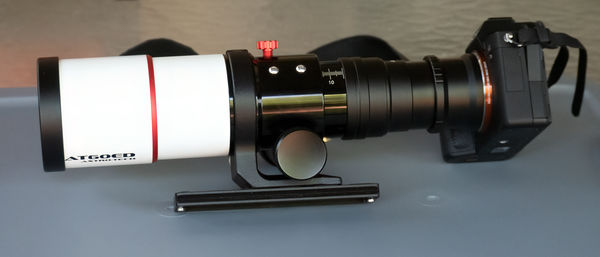
(Download)
scope + field flattener + T-Ring + camera
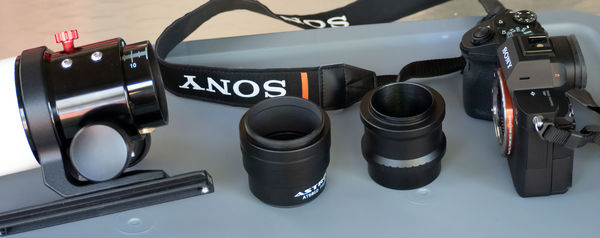
(Download)
Image to show that no CA is being generated
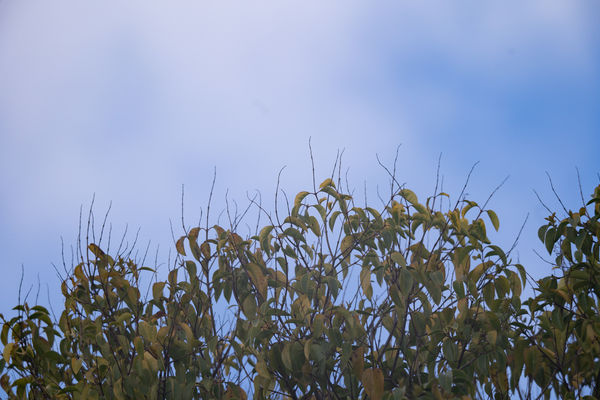
(Download)
Jun 10, 2019 11:52:49 #
wingclui44 wrote:
I would like to ask some questions, on the "America Nebula' image, did you take this image with 'eye-piece' projection to achieve this large image? Or you cropped it heavily?
Thank you for sharing!
Thank you for sharing!
I actually used the Atik Horizon Mono CMOS Camera for this. It is a 16M pixel, m4/3 sized, sensor, thus a 2X equivalent crop factor. There is no cropping. Since the image was done in mono, I added the red color in post processing to give it the normal color that it is seen. I used a Hydrogen Alpha filter which allows the normal color of the nebula to pass thru. This was a stack of 5 images of 60 sec each. The North American Nebula is actually quite large and easily filled the frame. Again, this is before I purchased the field flattener, thus the corner stars are distorted.
Adding an image of the original before I colored it.
Jun 10, 2019 11:57:32 #
You would get upside down images if doing eyepiece projection. I don't particularly like eyepiece projection and much prefer Prime Focus.
Here is an example of eyepiece projection using the Sony A7iii and a 90 degree diagonal eyepiece holder and an eyepiece. I think I was using a 20mm eyepiece at the time. and the camera was mounted on the eyepiece. Notice the image is flipped left to right.
The 2nd image is also eyepiece projection showing the narrow DOF with the flowers in focus, but the unopened ones in the front not in focus.
I find that the prime focus images are a bit sharper. But eyepiece projection also has additional factors to consider such as what eyepiece is being used. I find that my extra wide FOV eyepieces that look so good when looking through them don't look so good when the camera is looking through them.
Here is an example of eyepiece projection using the Sony A7iii and a 90 degree diagonal eyepiece holder and an eyepiece. I think I was using a 20mm eyepiece at the time. and the camera was mounted on the eyepiece. Notice the image is flipped left to right.
The 2nd image is also eyepiece projection showing the narrow DOF with the flowers in focus, but the unopened ones in the front not in focus.
I find that the prime focus images are a bit sharper. But eyepiece projection also has additional factors to consider such as what eyepiece is being used. I find that my extra wide FOV eyepieces that look so good when looking through them don't look so good when the camera is looking through them.
Jun 10, 2019 12:14:50 #
Orion Telescopes sells a fairly inexpensive, motor-drive astrophotography tripod/mount that would turn this into a really good astrophotography setup as well. You may need also to buy a mounting plate (a sort of rail that fits the mount, but Orion's mount may come with it. Perhaps $200 or so.
Jun 10, 2019 13:13:19 #
acreutz wrote:
Orion Telescopes sells a fairly inexpensive, motor-drive astrophotography tripod/mount that would turn this into a really good astrophotography setup as well. You may need also to buy a mounting plate (a sort of rail that fits the mount, but Orion's mount may come with it. Perhaps $200 or so.
Yes, I have been using a mount with it. I actually have several. The picture shows that I put a Swiss-Arca type rail on it for terrestrial use on a regular tripod.
Jun 10, 2019 13:29:14 #
wingclui44
Loc: CT USA
JimH123 wrote:
I actually used the Atik Horizon Mono CMOS Camera ... (show quote)
I believe you were using a equatorial or other motorize tracking mount, I have a home built 6" f8 Dobsonian, it works fine for observing but not for taking photo without tracking device.
Thank you!
If you want to reply, then register here. Registration is free and your account is created instantly, so you can post right away.

